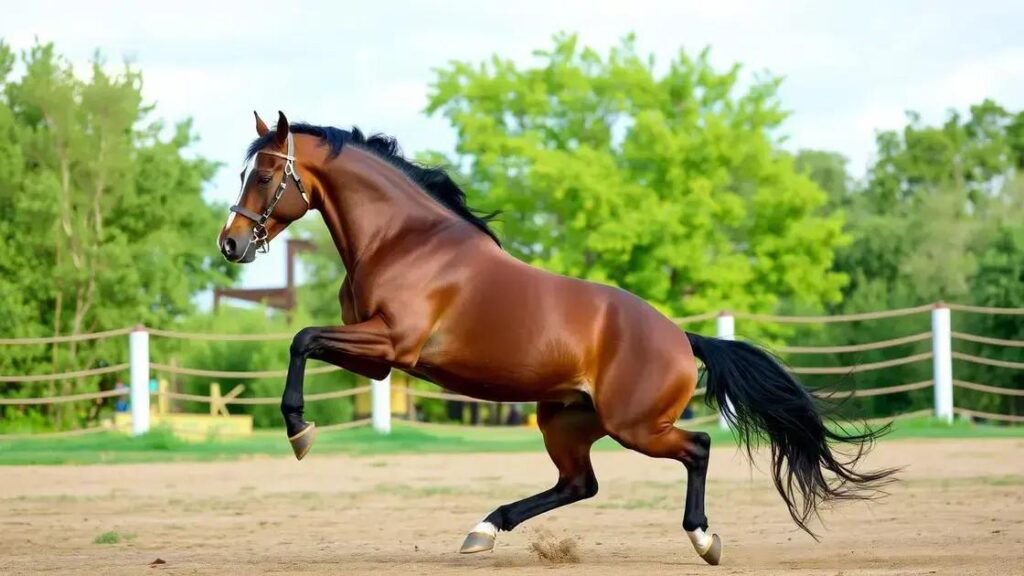Horse tricks can significantly enhance physical endurance for both horses and trainers by developing strength, coordination, and mental engagement through enjoyable exercise routines that include a variety of skills and techniques.
Does the Horse Trick enhance physical endurance? This question intrigues many fitness enthusiasts and horse lovers alike. Horse trick training may seem like just a fun activity, but it has deeper implications for physical performance. In this blog post, we will delve into what the Horse Trick is, how it can increase endurance, and provide insights on enhancing your fitness through this unique method. Let’s explore the fascinating interplay between skillful horse training and physical capabilities.
Understanding the Horse Trick and Its Origins
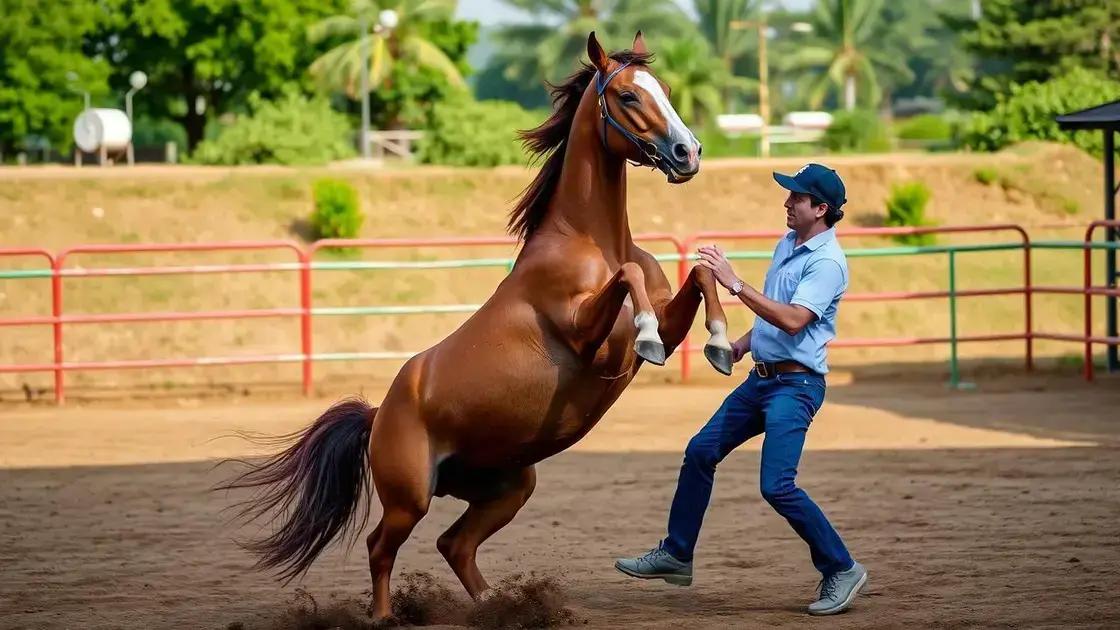
Understanding the Horse Trick is essential for anyone interested in equestrian arts and physical activities. This fascinating skill involves training horses to perform specific movements on command. Horse tricks can range from simple actions like bowing or lying down to more complex maneuvers, such as jumping through hoops or dancing. These tricks not only showcase the bond between horse and trainer but also emphasize discipline and practice.
Historically, the origins of horse tricks date back to ancient times when horses were trained for various purposes, including entertainment and performance. Ancient civilizations often held events where horses performed for audiences, blending elements of artistry and skill. The art of horse tricking has evolved over the years and has become popular in modern circuses, rodeos, and equestrian shows.
The Role of Training
Effective training in horse tricks involves positive reinforcement and building trust between the trainer and the horse. Trainers use rewards like treats or praise to encourage desired behaviors. This method not only makes the training enjoyable for the horse but also helps in developing a strong physical connection, enhancing the horse’s overall physical endurance.
Types of Horse Tricks
Some common horse tricks include standing on hind legs, shaking hands, and performing spins. Each trick requires specific skills and techniques that can significantly enhance the horse’s agility and muscle strength. By focusing on these elements, trainers can greatly improve the physical capabilities of their horses while also having fun.
Benefits of Horse Tricks
Practicing horse tricks can yield multiple physical benefits. Horses that engage in these activities often develop stronger muscles and better coordination. Additionally, the mental stimulation provided by learning tricks can lead to a more focused and responsive equine partner. This, in turn, contributes to improved performance in various equestrian disciplines, ultimately leading to enhanced physical endurance.
Physical Endurance: How Is It Measured?
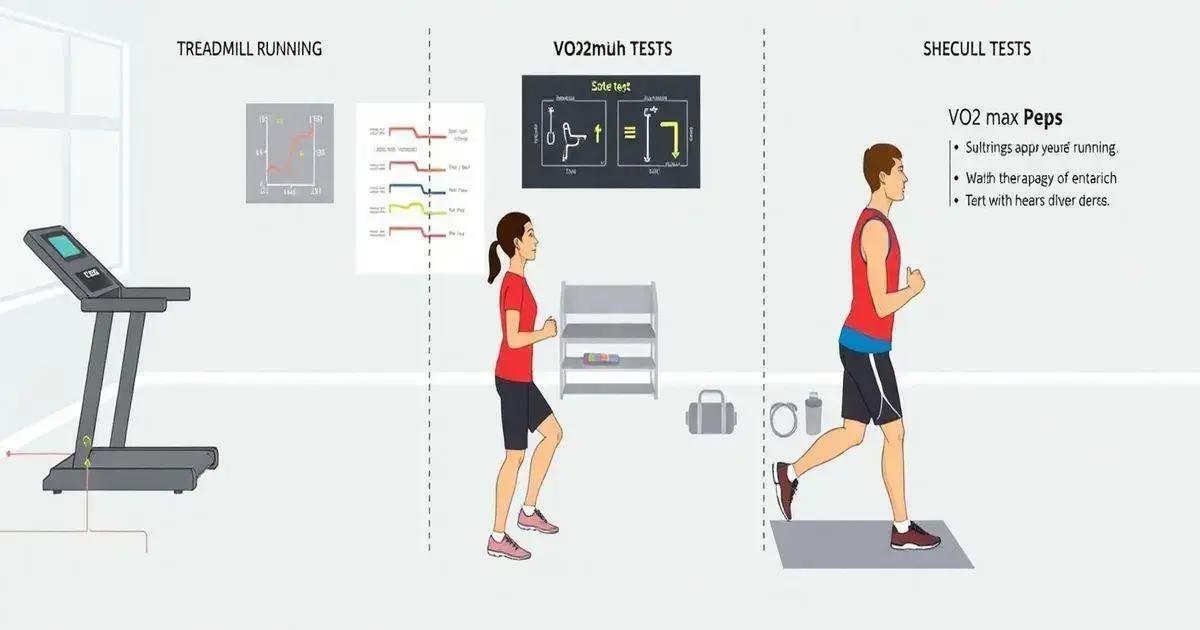
Physical endurance refers to the body’s ability to sustain physical activity over an extended period. It is a key factor in many sports and physical activities. Measuring endurance is important for understanding how well an individual can perform during prolonged exercise. There are various methods to assess physical endurance, each with unique metrics and techniques.
Common Methods of Measurement
One standard method to measure physical endurance is the VO2 max test. This test measures the maximum amount of oxygen that an individual can utilize during intense exercise. Higher VO2 max values indicate better endurance. Typically, this test involves a treadmill or stationary bike, with increasing intensity until exhaustion.
Another Effective Test
Another effective way to measure endurance is through the 1.5-mile run test. Participants run or walk a distance of 1.5 miles as quickly as possible. The time taken to complete the distance is recorded, with faster times indicating higher endurance levels. This test can be easily conducted outside or on a track and is popular for many fitness assessments.
Field Tests for Endurance
Field tests, such as the beep test or shuttle run, are also common ways to measure physical endurance. These tests involve running back and forth over a specified distance at increasing speeds until the participant can no longer keep up. These methods are practical for large groups and can provide straightforward results regarding an individual’s endurance capacity.
Importance of Consistency
Consistency is crucial when measuring physical endurance. Performing the tests under similar conditions, such as time of day and temperature, helps ensure accurate results. Additionally, it is essential to repeat the tests periodically to track progress over time. This ongoing assessment helps athletes understand their fitness levels and adapt their training programs accordingly.
The Connection Between Horse Tricking and Fitness
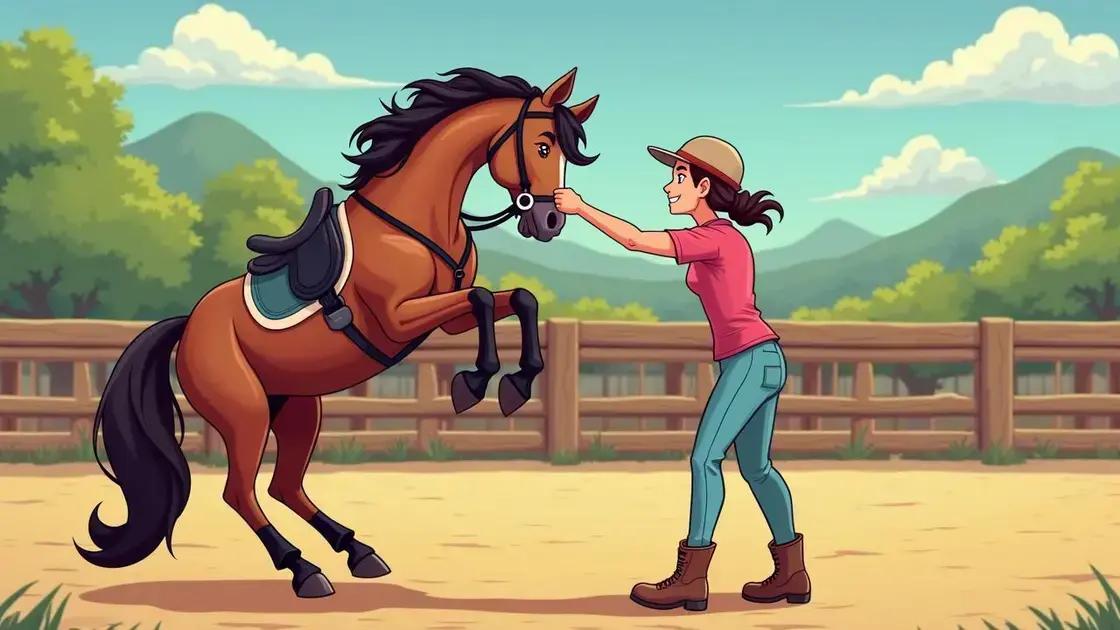
The connection between horse tricking and fitness is both fascinating and significant. Training a horse to perform tricks involves a variety of physical activities that can enhance the fitness levels of both the horse and the trainer. These tricks require strength, flexibility, and coordination, all of which contribute to better physical endurance.
Physical Benefits for Horses
When horses engage in trick training, they develop improved muscle tone and better overall strength. Regular practice of tricks helps build core muscles and develops balance, which is essential for performing complex movements. As horses become fitter, they can perform tricks for longer periods without showing signs of fatigue, leading to enhanced physical endurance.
Advantages for Trainers
For trainers, participating in horse trick training is also a workout. Trainers often walk, run, and use their body weight during sessions, which improves their cardiovascular fitness. Engaging with horses offers a dynamic training environment that can increase core stability and muscular strength as they demonstrate techniques alongside their horses.
Mental Stimulation and Fitness
Fitness isn’t just about physical activity; it also involves mental stimulation. Horse trick training requires focus, patience, and creativity. These mental challenges can improve cognitive functions for both horse and trainer, which contributes to a better overall fitness experience. The combination of physical exertion and mental engagement makes trick training an effective way to enhance fitness.
Social Interaction and Motivation
Furthermore, horse trick training is often a social activity. Group training sessions or participating in demonstrations can boost motivation and commitment to fitness goals. Interacting with others who share similar interests can encourage both trainers and horses to push their limits. This social aspect helps keep training enjoyable and consistent, further enhancing physical endurance.
Practical Tips to Incorporate Horse Trick into Training
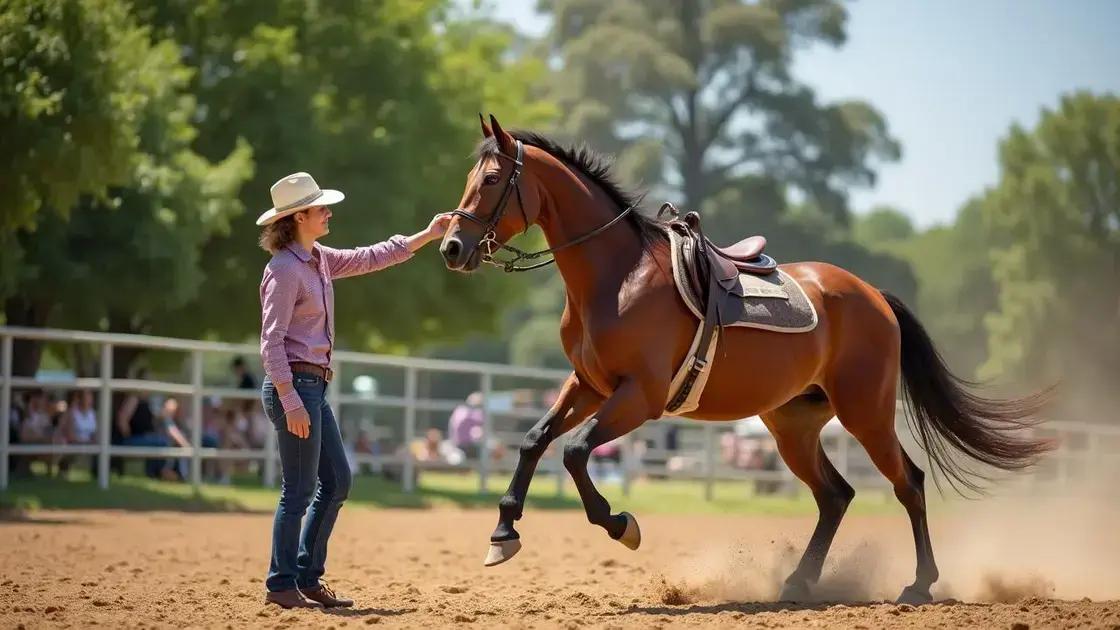
Incorporating horse tricks into your training regimen can enhance both physical endurance and the bond between you and your horse. Here are some practical tips to get started:
1. Start with Basic Tricks
Begin with simple tricks that establish a foundation for more complex movements. Tricks like bowing or shaking hands can be a great introduction. These basics should be easy for your horse to learn and will build their confidence.
2. Use Positive Reinforcement
Positive reinforcement is vital in horse training. Always reward your horse with treats, praise, or pats when they successfully perform a trick. This will keep them motivated and eager to learn. Remember that patience is key, as training takes time!
3. Set Short Training Sessions
Keep training sessions short and fun, ideally lasting no more than 15 to 20 minutes. Shorter sessions help maintain your horse’s attention and prevent fatigue. Use these moments to focus on one or two tricks at a time for maximum effectiveness.
4. Create a Routine
Establishing a routine is essential for both you and your horse. Incorporate trick training into your regular workouts. You might add tricks at the beginning as a warm-up or at the end for fun. This consistency can enhance your horse’s performance in other areas of fitness.
5. Gradually Increase Difficulty
Once your horse masters basic tricks, gradually introduce more complex ones such as dancing or jumping over obstacles. By slowly increasing the difficulty, you ensure that your horse remains confident and engaged, ultimately enhancing their physical endurance.
6. Mix Tricks with Other Exercises
To keep things exciting, mix trick training with traditional fitness exercises, like lunging or fitness circuits. This combination ensures your horse develops strength and endurance while also having fun learning new skills.
7. Monitor Progress
Track your horse’s progress and endurance levels as they learn new tricks. Keeping a journal can help you note improvements and adjust training routines as needed. This will allow you to see how trick training benefits their overall physical abilities.
In Conclusion: Does the Horse Trick Enhance Physical Endurance?
Training horses to perform tricks not only showcases their abilities but also contributes to enhanced physical endurance for both the horse and the trainer. By incorporating horse tricks into fitness routines, you can foster a stronger bond and promote better health.
The benefits are clear; from improving muscle strength and coordination to providing mental stimulation, horse tricking is a unique and engaging way to enhance overall fitness. With practical tips and consistent practice, anyone can integrate this enjoyable activity into their training while achieving impressive results.
Embrace the art of horse trick training, and you will likely find your horse’s endurance levels rising as you both enjoy the journey together.
FAQ – Frequently Asked Questions about Horse Tricks and Physical Endurance
How do horse tricks enhance physical endurance?
Horse tricks promote physical stamina by developing muscle strength and coordination in both the horse and the trainer, leading to improved endurance.
What are some basic horse tricks to start with?
Begin with simple tricks like bowing, shaking hands, or stepping back. These foundational tricks are easy for horses to learn and build confidence.
How often should I train my horse with tricks?
Aim for short training sessions of 15 to 20 minutes a few times a week. This ensures your horse stays engaged and prevents fatigue.
What is the best way to motivate my horse during trick training?
Use positive reinforcement, such as treats, praise, or affection, to motivate your horse. This encourages them to perform tricks enthusiastically.
Can trick training benefit my horse’s overall fitness?
Yes! Trick training develops strength, balance, and body awareness in horses, contributing to better overall fitness and performance.
How can I measure my horse’s progress in endurance?
Track your horse’s ability to perform tricks over time. As they become more confident and capable, you will notice improvements in their endurance.

